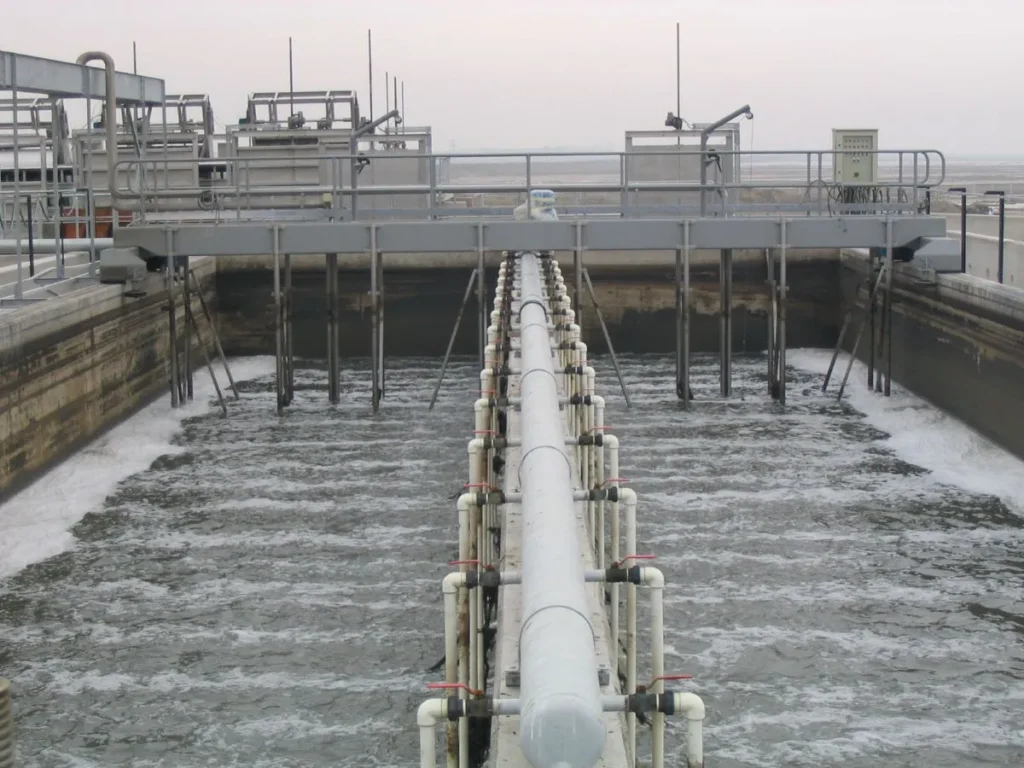Grit Chamber In Wastewater Treatment

Grit Chamber in Wastewater Treatment: An Essential Component for Efficient Operations
Wastewater treatment plays a crucial role in maintaining public health, protecting ecosystems, and establishing sustainability in water management. A central aspect of wastewater treatment is the initial separation of solid materials to prevent damage to downstream equipment and to ensure efficient processing. Among the various components integral to this process, the grit chamber has emerged as an essential element. This extensive article will delve into the intricacies of grit chambers, discussing their design, function, types, and the advantages they offer in wastewater treatment systems.
Introduction
Wastewater contains a variety of solids and particulates, ranging from organic matter to inorganic sediments. Effective separation of these materials is critical to avoid blockages, abrasive wear on mechanical components, and overall inefficiency. The grit chamber, a primary treatment structure, addresses this challenge by removing heavy inorganic particles such as sand, gravel, cinders, coffee grounds, and other coarse materials from the wastewater stream.
The Role of Grit Chambers
Grit chambers serve as the initial line of defense in a wastewater treatment facility. Their primary role is to capture and remove grit, which is typically defined as particles with a size of 0.2 mm or larger. By systematically separating these particulates, grit chambers minimize wear and tear on downstream equipment such as pumps, conveyors, and various clarification systems. This not only extends the lifespan of this machinery but enhances overall treatment efficiency.
Design and Operation
Criteria for Effective Design
Effective grit chamber design balances multiple factors: hydraulic flow rates, particle size distribution, and settling characteristics of the particulates. The challenge is to create an environment where grit can settle out due to gravity while organic matter remains in suspension. Several key criteria, therefore, must be emphasized:
-
- Flow Velocity: Setting an optimum flow velocity that ensures grit settles without resuspending is essential. Typically, velocities range between 0.3 to 0.9 meters per second (1 to 3 feet per second).
- Flow Velocity: Setting an optimum flow velocity that ensures grit settles without resuspending is essential. Typically, velocities range between 0.3 to 0.9 meters per second (1 to 3 feet per second).
-
- Retention Time: The chamber must provide sufficient retention time for particles to settle. Depending on the design, retention time can vary from 30 seconds to several minutes.
- Retention Time: The chamber must provide sufficient retention time for particles to settle. Depending on the design, retention time can vary from 30 seconds to several minutes.
-
- Cross-sectional Area: The dimensions of the chamber need to accommodate the peak flow rate, ensuring uniform velocity distribution.
- Cross-sectional Area: The dimensions of the chamber need to accommodate the peak flow rate, ensuring uniform velocity distribution.
-
- Accessibility: Designing for easy access helps in periodic maintenance and removal of accumulated grit.
Types of Grit Chambers
Grit chambers can be broadly categorized into three major designs: horizontal flow, aerated, and vortex type. Each type offers unique operational characteristics and advantages.
1. Horizontal Flow Grit Chambers
Horizontal flow grit chambers are among the most traditionally used designs. These chambers feature a length that is multiple times greater than their width and depth. Wastewater flows horizontally through the chamber, allowing grit to settle by gravity.
Advantages:
-
- Simplicity in design and construction.
-
- Effective for a wide range of flow rates.
-
- Can be easily constructed using various materials.
Disadvantages:
-
- Larger footprint compared to other designs.
-
- Periodic manual cleaning may be required.
-
- Less effective at capturing very fine particles.
2. Aerated Grit Chambers
Aerated grit chambers introduce air into the wastewater stream, creating a spiral flow. The turbulence enhances grit settlement by differential settling – grit particles are swept to the bottom while lighter organic materials remain suspended.
Advantages:
-
- Improved removal of both fine and large grit particles.
-
- Reduced organic content in the grit, enhancing disposal options.
-
- Better control of odors due to aeration.
Disadvantages:
-
- Higher energy consumption due to air supply.
-
- More complex maintenance due to aeration equipment.
-
- Potentially higher operational costs.
3. Vortex Grit Chambers
These chambers, also known as centrifugal or circular grit chambers, utilize induced vortex flow to separate grit. Wastewater enters tangentially, creating a vortex that drives grit particles to the chamber’s center where they settle and are collected.
Advantages:
-
- Compact footprint, ideal for urban and space-constrained installations.
-
- High efficiency in removing fine and coarse grit.
-
- Continuous and automated grit removal capability.
Disadvantages:
-
- Higher construction and operational costs.
-
- Complex hydraulic design may require sophisticated modeling.
-
- Routine maintenance required to ensure consistent performance.
Efficiency and Performance Metrics
Grit chamber performance is evaluated based on several metrics, including grit removal efficiency, organic content in the removed grit, and energy consumption. These factors are influenced by chamber design, operational parameters, and environmental conditions. Performance metrics include:
-
- Grit Removal Efficiency: The percentage of grit particles removed from the influent stream. Modern grit chambers can achieve efficiencies greater than 95%.
- Grit Removal Efficiency: The percentage of grit particles removed from the influent stream. Modern grit chambers can achieve efficiencies greater than 95%.
-
- Organic Content: Lower organic content in the collected grit is desirable to minimize odor and enhance disposal options.
- Organic Content: Lower organic content in the collected grit is desirable to minimize odor and enhance disposal options.
-
- Energy Consumption: Grit removal processes should balance efficiency with energy use to maintain economic operation.
Advances and Innovations
The field of grit removal has seen significant advancements aimed at optimizing the design and enhancing operational efficiency:
-
- Computational Fluid Dynamics (CFD): The application of CFD modeling allows for precise simulation of flow patterns within grit chambers, leading to optimized design and improved performance.
- Computational Fluid Dynamics (CFD): The application of CFD modeling allows for precise simulation of flow patterns within grit chambers, leading to optimized design and improved performance.
-
- Automated Removal Systems: The integration of automated grit removal mechanisms, such as screw conveyors and pneumatic systems, minimizes manual intervention and enhances operational consistency.
- Automated Removal Systems: The integration of automated grit removal mechanisms, such as screw conveyors and pneumatic systems, minimizes manual intervention and enhances operational consistency.
-
- Hybrid Designs: Combining elements of different chamber types, such as aerated vortex chambers, can offer improved performance and flexibility in grit removal.
Maintenance and Operational Considerations
Regular maintenance is essential for ensuring the longevity and efficiency of grit chambers. Key practices include:
-
- Periodic Inspection: Regular visual inspections help identify wear, blockages, or damage to structural elements and mechanical components.
- Periodic Inspection: Regular visual inspections help identify wear, blockages, or damage to structural elements and mechanical components.
-
- Cleaning: Scheduled cleaning of grit accumulation, chamber walls, and associated removal equipment prevents operational decline and ensures consistent performance.
- Cleaning: Scheduled cleaning of grit accumulation, chamber walls, and associated removal equipment prevents operational decline and ensures consistent performance.
-
- Monitoring: Continuous monitoring of flow rates, grit capture, and overall system performance allows for timely identification of issues and implementation of corrective actions.
Environmental Impact and Sustainability
Grit chambers contribute to the broader goals of environmental stewardship and sustainability in wastewater treatment:
-
- Reduced Wear on Equipment: By preventing abrasive damage to downstream machines, grit chambers reduce the need for frequent repairs and replacements, contributing to resource conservation.
- Reduced Wear on Equipment: By preventing abrasive damage to downstream machines, grit chambers reduce the need for frequent repairs and replacements, contributing to resource conservation.
-
- Enhanced Treatment Efficiency: Effective grit removal ensures that subsequent treatment stages function optimally, leading to more efficient nutrient removal and higher-quality effluent.
- Enhanced Treatment Efficiency: Effective grit removal ensures that subsequent treatment stages function optimally, leading to more efficient nutrient removal and higher-quality effluent.
-
- Responsible Disposal: Properly managed grit with low organic content can be disposed of in landfills or repurposed for construction materials, aligning with waste minimization strategies.
Challenges and Future Directions
Despite their importance, grit chambers face several challenges, including:
-
- Capital Cost: Initial investment in constructing and installing advanced grit chambers may be prohibitive for some municipalities and facilities.
- Capital Cost: Initial investment in constructing and installing advanced grit chambers may be prohibitive for some municipalities and facilities.
-
- Operational Complexity: Advanced systems with complex hydraulic designs and automated components require skilled personnel for operation and maintenance.
- Operational Complexity: Advanced systems with complex hydraulic designs and automated components require skilled personnel for operation and maintenance.
-
- Environmental Variability: Changing environmental conditions, such as storm events or industrial discharges, can impact grit characteristics and subsequently affect grit chamber performance.
Future directions for grit chamber development may include:
-
- Smart Grit Chambers: Integration of IoT and smart sensors can enable real-time monitoring and adaptive control of grit removal processes.
- Smart Grit Chambers: Integration of IoT and smart sensors can enable real-time monitoring and adaptive control of grit removal processes.
-
- Sustainable Materials: Utilization of eco-friendly and durable materials for chamber construction can enhance sustainability and reduce environmental impact.
- Sustainable Materials: Utilization of eco-friendly and durable materials for chamber construction can enhance sustainability and reduce environmental impact.
-
- Collaborative Research: Increased interdisciplinary research and collaboration among engineers, environmental scientists, and policymakers can lead to innovative solutions and best practice guidelines for grit chamber design and operation.
Conclusion
Grit chambers remain a fundamental component of wastewater treatment systems, playing a vital role in safeguarding downstream processes and contributing to overall treatment efficiency. Through thoughtful design, regular maintenance, and continuous innovation, grit chambers will continue to evolve, ensuring their relevance and effectiveness in addressing the challenges of modern wastewater management. As we move towards a more sustainable future, these silent protectors will remain at the forefront of efforts to secure clean water and protect our environment.


